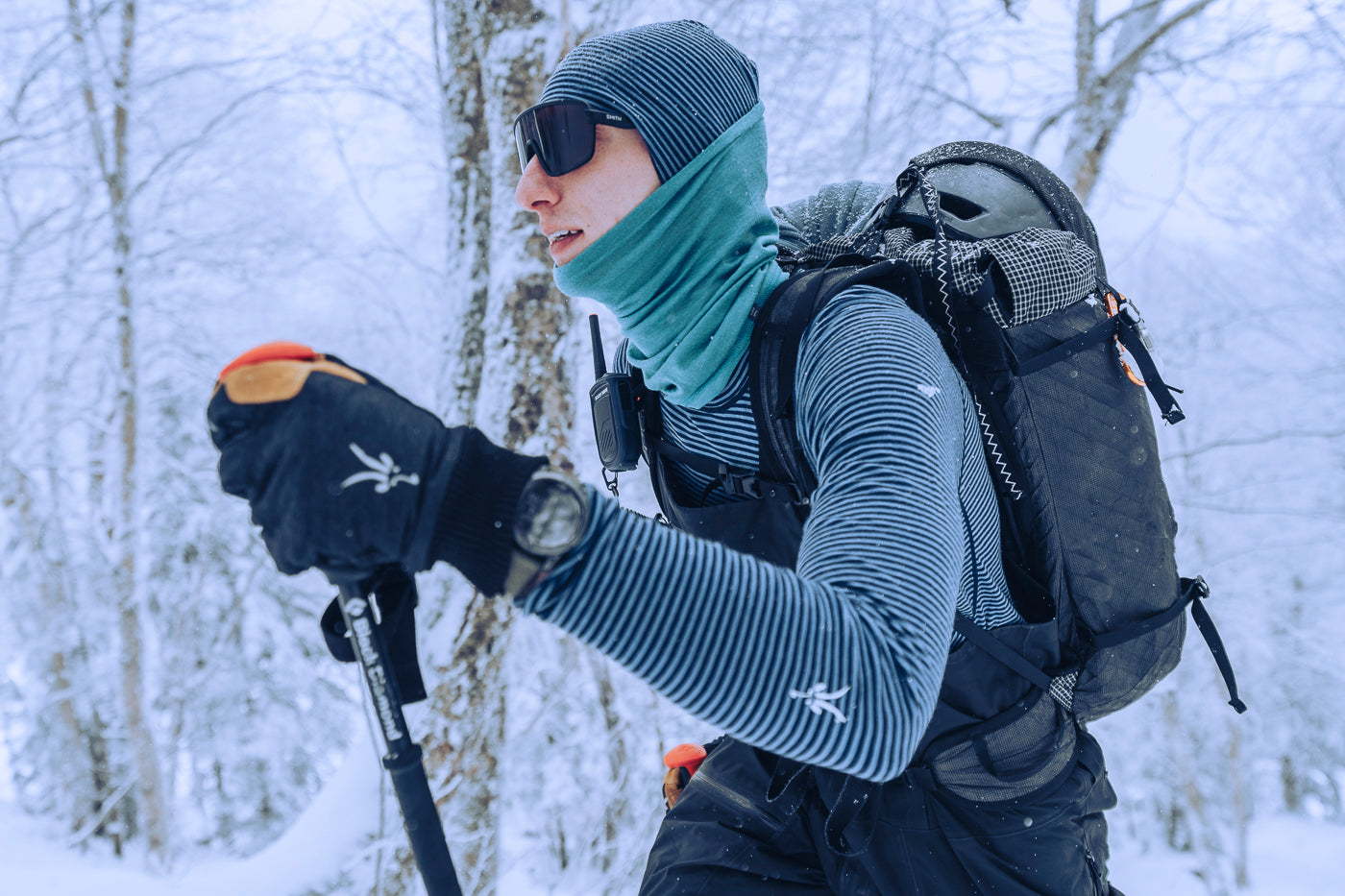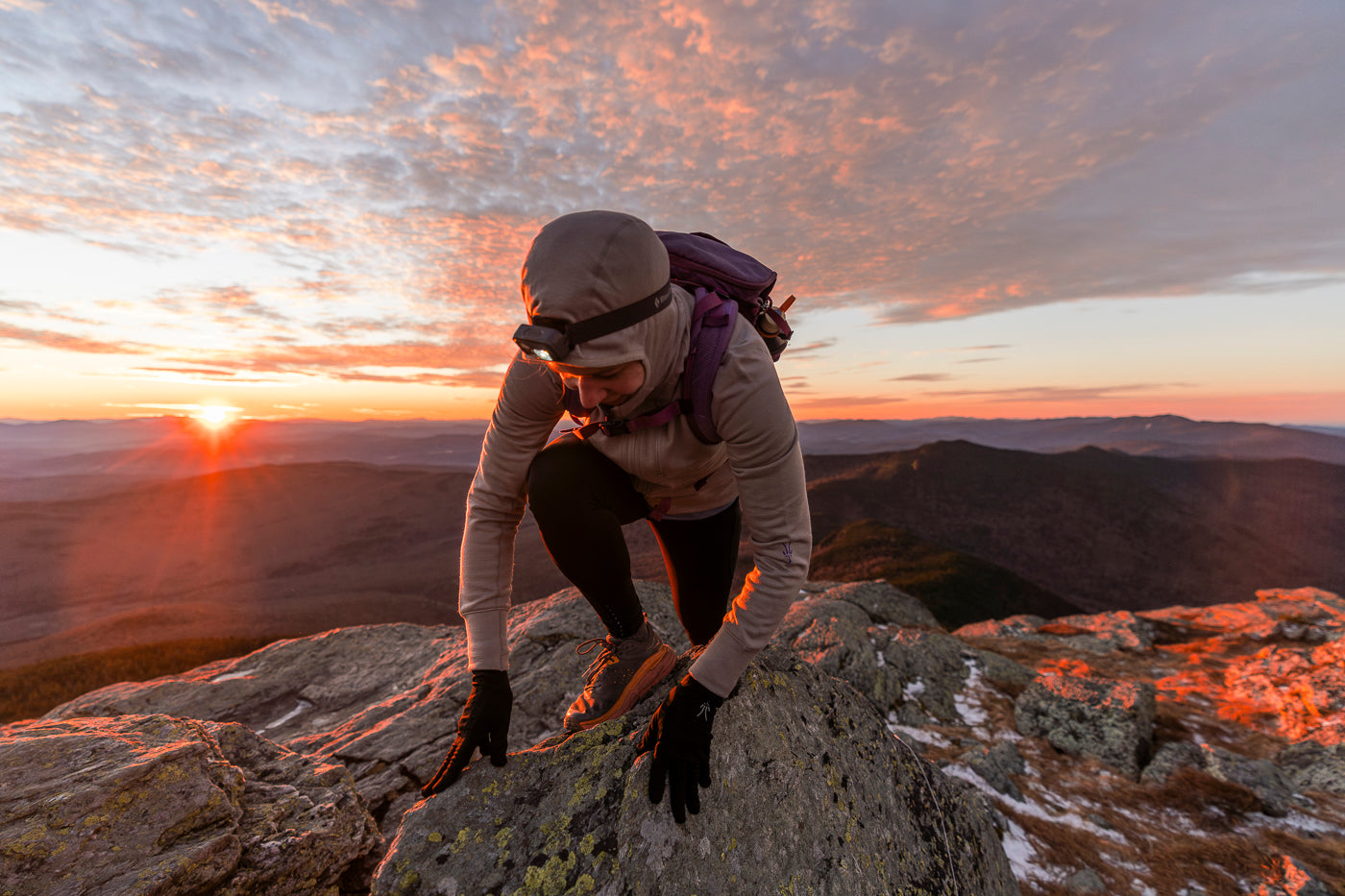

A Hiker in Sheep’s Clothing
On a 10-day walk in the English Cotswolds,one hiker learns how to slow way down
By Kassondra Cloos
It never occurred to me until I was surrounded on a grassy pasture in rural England to wonder how a sheep might feel to see a hiker wearing wool. I had just passed through a gate marked with the Cotswold Way’s signature upside-down acorn trail marker and was climbing a steep hill pockmarked with sheep turds in search of the next signpost. Fluffy white blobs scattered whenever I drew near, and little lambs darted across my path, bleating nonsense that I decided to interpret as kind greetings. “Hello, there!” I called back in my friendliest voice, trying to signal that I was a friend.
Could they tell I was wearing a merino tee, woven from the coat of some long-lost cousin in Australia? I wondered if they cared, if they were proud, if they thought I looked absurd in my appropriated attire.
These are, of course, ridiculous questions to ask. But they’re also just delightful to wonder about, when you have the time and the space and the mental bandwidth to take in everything around you instead of rushing off to the next thing and the next thing and then whatever comes after that.
In early July, burned out from the pandemic and far too much screentime, I threw down my laptop, put my phone on airplane mode, and booked a last-minute self-guided tour of England’s Cotswold Way through Macs Adventure. The trail extends 102 miles from the charming, ancient market village of Chipping Campden, a few hours by train from where I live in London, to the Roman city of Bath. It winds through tiny towns that look like fairy tales, criss-crosses golf courses that double as grazing pastures, and climbs over steep hillsides with sweeping views of the countryside and the mountains of Wales. You can really hoof it, if you’d like, camping along the way and cooking eggs bought from honor system crates stacked at the ends of farmhouse driveways, but you don’t have to. I love that about Europe, that you can take a long, hard hike through the most rural and seemingly remote stretches of the Earth, but you’ll never be all that far from an inn or a pub.



Photo Credit: Kassondra Cloos
The Cotswold Way was officially established as a National Trail in 2007, and most of it is contained in—I kid you not—the Cotswold Area of Outstanding Natural Beauty. I love this about England, too—every country has its problems, sure, but I can’t think of anywhere else so effortlessly charming as to come up with such lovely official designations for the places it cherishes most.
Over 10 days, I saw far more sheep and cows than humans. I slept in small inns and hotels in towns with no gas stations, shops or parking lots, where it seemed more likely I’d cross paths with a horse than a car. For the first time in months, if not years, I let my imagination run truly wild. Who built these houses of stone, and who were the first families to live in them? What was it like, in the year 1697 or 1731 or 1809, to live in this sort of neighborhood and rely only on in-person communication? It wasn’t even until the mid-1800s that it was affordable for the average person to send a letter. What would it be like, to move to another town only as far away as you could walk, bringing only what you could carry, and not have the privilege to call home to let your family know you made it safely and were now living the dream? And what even was “the dream” 400 years ago?
All day, every day, I let my mind wander and conjure images of those who’d walked these paths before me. I sat on benches to watch sheep graze in a steep and untamed golf course at the highest point of the trail, Cleeve Hill, wondering how often they have to dodge rogue golf balls and whether they can give each other the Heimlich if one happens to think they look tasty. I lingered at breakfast to chat with the few other hikers whose journeys paralleled mine, and learned that while there are very few things in this island country that can kill you—not poisonous spiders nor bears nor vicious mountain lions—cows can indeed be quite mean. I gave a wide berth to the bovines blocking my path through a small, shady grove of trees on a hot, sunny day and felt a rush of adrenaline when I made it through the gate to the neighboring butterfly reserve (and yes, I did ask if they would please mooove over; they would not).
In the evenings, I kicked off my muddy boots in the doorways of inns and tumbled into bed wearing the same tank top I’d hiked in all day. I ate as much ice cream as I could get my hands on, finished reading one book and started another, and wrote long and meandering letters to mail back to my flat in London. I planned to read them on busy days to remember how nice it feels to stop and stare at the world around you with no agenda or expectation of what will come next.
My dream, I thought, as I sat in the shade a few miles from the end of the trail in Bath to sip local apple juice and gawk at a patchwork quilt of farms and pastures on the opposite hillsides, is to do this every day. To wake up in the mornings, put on a pair of hiking boots, and walk until I find a place I’d like to sit and think about the world or a pretty teahouse where I can get a good scone, whichever comes first. To go about things more slowly, always and in every way, and to spend more time just staring at what makes life beautiful.
Kassondra Cloos is the editor-in-chief of The Bellwether and a freelance travel writer. Don’t ask her where she lives—she’s figuring it out.
Header Photo Credit: Macs Adventure





